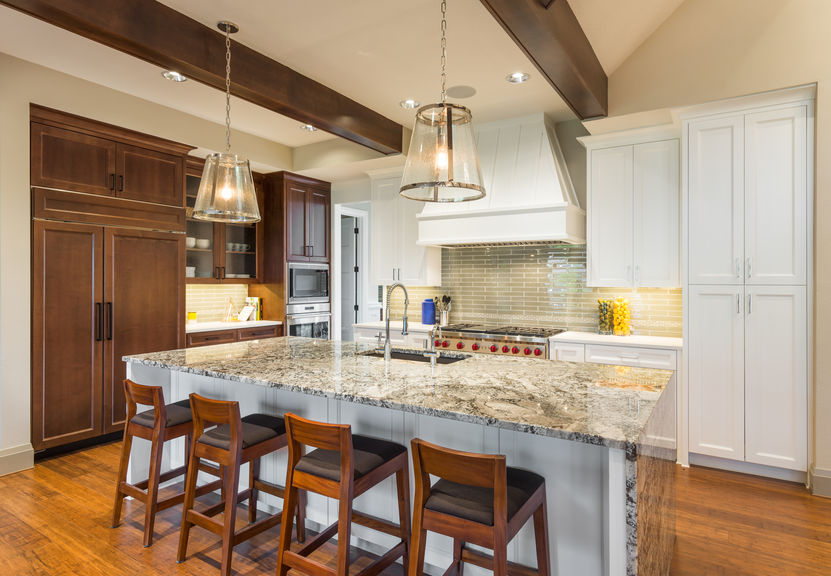
- Dissemble the Range Hood
The first step includes removing the parts of the range hood one by one. Trying to install a whole range hood as a package is impossible because of its weight, especially if you do not have an extra hand. For that reason, remove the filter, electrical and lighting housing.
- Measure and Mark the Outline
The next step, which involves taking measurements and marking the outline where the range hood and the duct are going to lay on the wall, is very critical. It determines how perfectly you are going to lay the range hood over the wall. A slight mistake can cause damage because of smoke leaks. At the same time, missing the right measurements can affect the proper functioning of the range hood. Mark the screw holes, outline using a pencil, and place some color tape to make them more visible for easier and smooth working.
- Drill Holes and Cut the Outline
Afterward, use a power drill to make holes in the screw markings you just made with a pencil and color tape. We insist on using a power drill because the manual drill would cause further damage around the holes, especially if you are installing the range hood on drywall. When done with this, use a drywall saw to cut the outline of the range hood and the duct. Similarly, a drywall saw prevents damaging the areas around the outline. If it is a masonry wall like stucco or brick, use a masonry bit to drill the holes. Drill the holes a bit from inside and then from outside until they go through. To cut the layout, use a masonry chisel to chip out the layout of the hood. Install a cable clamp in the knockout hole of the hood and pass the power cable through the clamp.
- Mount the Range Hood
Hold the range hood in place over the layout and tighten the screw using the power screwdriver. If you are not a handy person, you will need an extra helping hand because the hood is still a little heavy. Use silicone caulk to seal the space left between the hood and the layout on the wall, if you are dealing with a masonry wall like in the case of stucco or brick. This is to make airtight in order to prevent leakages. Use a tape to join the duct to the hood to make it hold in position.
- Install the Wall Duct Cap
A wall duct cap is a piece of the range hood that covers the area where the duct is mounted on the wall. Its main purpose is to cover the duct and make the work look neat and organized. You just lay it over the duct and connect it to the range hood by tightening hooded screws using a manual screwdriver.
- Assemble the Range Hood
Having done that, you might be tempted to think you are done with the installation work. The truth of the matter is that the installation work is far from over. Connect the electrical cable to the power clamp. Ensure to match them according to color code. Using the simple to read user manual, put back the electrical and lighting housing into the range hood. Turn the range on to test if it is functioning properly.
As easy as the installation of a range hood may seem and sound, you might be surprised at how difficult it can get when it comes to the actual job, especially if you are not a handy person. It would be very disappointing to spend a couple of your hard-earned money on a good range hood, only to mess it during installation. To avoid such disappointments and have complete peace of mind, call in a contractor to do the job. Check for customer reviews and ratings of contractors if you want to land the best in town.
